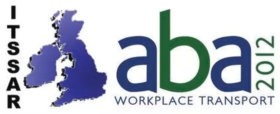Operator Safety Code
Forklift Counterbalance Forklift Training
Most fork lift accidents happen when trucks fall in a sideways direction than when they tip forwards.
The golden rule is: STAY ON THE TRUCK AND DON’T JUMP OFF!
If the truck is fitted with a seat belt, wear it at all times.
Causes of Lateral Instability (Sideways)
Tip Over
Avoid turning at excessive speed and note that it’s worse when unladen
Do not turn with an elevated mast Do not lift a load with full back tilt applied Watch out for potholes, rubbish on the floor and other floor obstructions Forks/Side shift not central when handling loads Never turn across an incline or slope Watch out for live loads
Causes of Longitudinal Instability (Lengthways)
Unstable Load
Overloading
Rough or uneven ground conditions Undercutting (increased load centre distance)
Forward Tilting a raised load Live load Rough use of controls Harsh acceleration or braking Travelling with load to high Travelling in wrong direction on a slope
Load Centre The load centre distance is measured from the vertical face of the forks, to the centre of gravity of the load.
HSE
Enforcement of the Health & Safety at Work Act 1974 is the responsibility of the Health & Safety Executive and Local Authorities.
Health & Safety legislation places responsibility for safety at work on everyone on the premises. An Approved Code of Practice gives advice to duty holders on how to comply with legislation.
Prior to operating a lift truck in the working environment the operator must have written authorisation issued by the employer. The operator is responsible for checking that the lift truck is in good working order before using it.
Travel at a speed consistent with the type of load and the general working conditions.
When sounding the horn always give several short sharp blasts (3).
Do not park an industrial lift truck near doorways, switches and electricity boards, fire fighting equipment, blind corners, on inclines, on soft ground, middle of an aisle, fire exits or pedestrian walk ways.
In normal circumstances if the load on the forks obscures your view you should travel in reverse, looking in the direction of travel (except when travelling up an incline, then get someone to guide you).
When following another truck keep a minimum distance of three truck lengths.
Before moving off with a lift truck in any direction the last thing the operator must do is to release the parking brake.
The term “Laden” means with a load, the term “Unladen” means without a load. Incline.
When travelling on an incline and laden, the load must face uphill at all times. Unladen, the forks must face down hill. Never travel across an incline
When driving an unladen truck the forks must be positioned as low as practicable and tilted back.
To comply with the manufacture’s stated lifting capacity the truck’s mast must be in the vertical position with the truck on level ground.
Net weight = the weight of the load.
Gross weight = the weight of the load and packaging.
In winter months loads stacked outside may be covered in ice and snow, the effect of this will increase the weight of the load.
When using the hydraulic controls always apply the handbrake and select neutral.
Apply sufficient tilt to cater for the type of load and ground conditions. Roller Door Collision
The meaning of “free lift” in connection with lift trucks is the distance the forks can be raised before the mast begins to extend. This is important to know if your truck has Free Lift/No Free Lift in order to prevent collision with roller shutter doors or any overhead obstructions.
When carrying a load on level ground, the correct position of the forks is 100-150mm (4-6 Inches) off the ground and tilted back sufficiently to stabilise the load.
When loading a lorry it is important that loaded pallets are placed tight to one another and against the headboard to reduce load movement in transit especially when the lorry is braking and to ensure the lorry will take a full load.
For more information and training pleas contact TTF Scotland striving to make the workplace safer and more productive.
